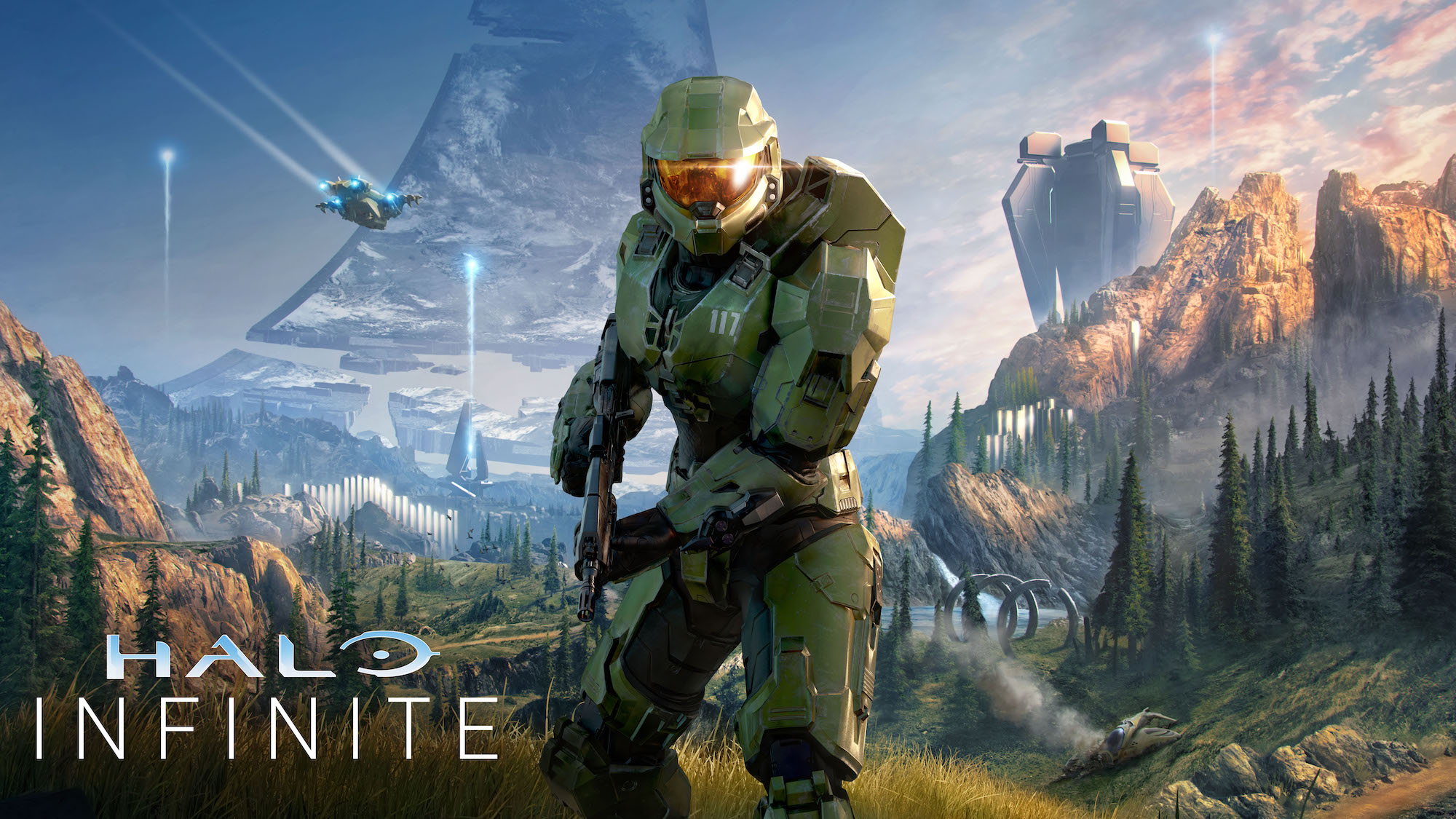After a lengthy wait filled with lots of Internet chatter, controversy and worry, Halo Infinite is finally about to launch. Now, PC gamers, Xbox One users and early adopters of Microsoft’s tough to find Xbox Series consoles will be able to play and enjoy their most anticipated game and system seller. The only question that remains is whether 343 Industries’ latest first-person shooter epic was worth the wait.
It’s been six years since we last visited with Master Chief, and quite a bit has happened in that time, both in the real world and this fictional universe. Cortana has gone rogue, Spartans have died, and the good guys have suffered defeat in a large scale battle against the Banished. Things aren’t looking great for the UNSC, and it’s our job to try to turn those tides some.
Halo Infinite picks up as Master Chief is unceremoniously battered, bruised and left for dead by Banished leader Atriox. However, as luck would have it, John 117 is discovered floating in space by the pilot of a troubled Pelican. This scared, lonesome and worried newcomer rescues our hero from deep space, plugs his suit back in and is able to save him from potential death.
Following all of the above, things shift to a new location, with that being a ring called Zeta Halo. However, as is often the case, the pair’s new destination is far from safe, pleasant or secure. In fact, it’s controlled by the Banished, and they’ve set up shop across the planet-like installation. On top of that, they’ve kidnapped and locked up numerous UNSC soldiers.
This is the set-up and opening to what is a lengthy, action-packed and challenging campaign, and one that acts as the third chapter of 343’s Reclaimer Saga. As such, its story follows in the footsteps of Halo 4 and Halo 5: Guardians, and builds upon what happens in those games. Thus, a lot of the story has to do with Cortana’s actions and their repercussions, including deletion, remaining fragments and the relationship that she and Master Chief shared. On top of this, there’s the Banished, who have their own agenda within the Zeta Halo ring. They don’t take kindly to discovering that the most famous Spartan has survived.
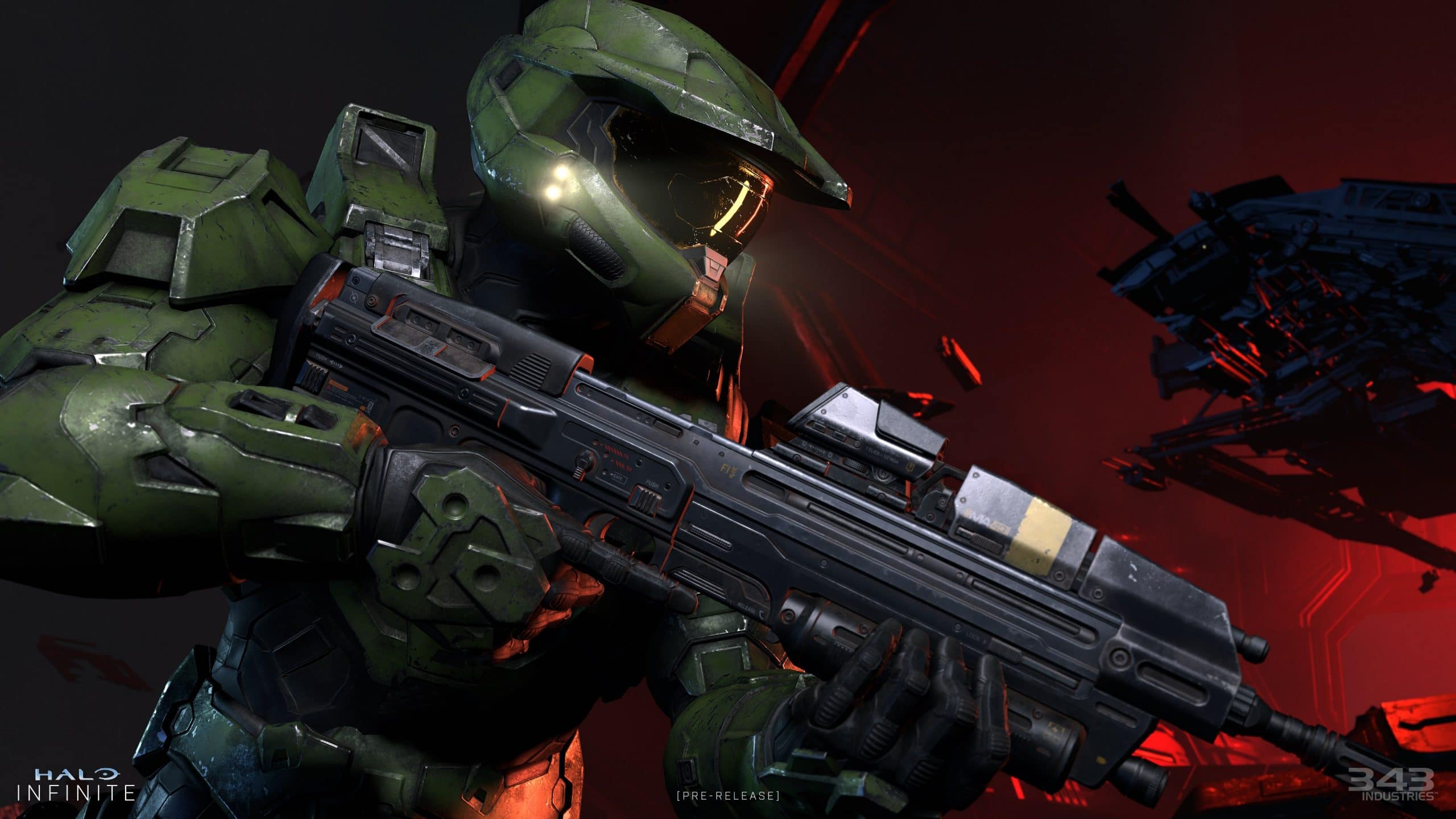
If you’re a big fan of Halo, and love losing yourself in the series’ ongoing lore, then you’ll likely be quite happy with the story found within Infinite. It’s quite cryptic, and doesn’t exactly tell things in order, but it’s full of lore, hints, Easter eggs and other tidbits that fans of the franchise will appreciate. Unfortunately, I’m someone who was late to the party and didn’t get into this narrative nearly as much as some friends of mine. Although I played and beat almost all of the previous games, it’d been six years since I last played Halo 5, and even longer since my time with Halo 4, so I honestly didn’t remember a whole lot. As such, I admittedly got a bit confused at times, though I think I understand what happened now. Most of it at least.
One thing I will say is to make sure not to close the game until after its credits roll, because there’s a tease of what’s to come following their conclusion. It’s like a Marvel movie in that way, for better or worse.
What makes Halo Infinite different from its predecessors is its new, predominantly open world, design. Zeta Halo is a large location, with at least a couple different maps to explore. It’s also full of things to find, shoot, capture, assist or take over. Thus, those who fancy themselves completionists will have lots to do during and after the story campaign itself. Even though I thought I was pretty thorough — at least early on — I only ended up completing 30% of the included content. This is with the entire campaign factored in.
The best way I can describe this game is to refer to it as an FPS sandbox. Then again, Halo has always been more of that than perhaps any other shooter, due to its wide list of available weapons, usable vehicles and that kind of thing. This particular installment takes all of that a step further, though, because it introduces an open world structure into the mix. This results in a gaming experience wherein the player has lots of choice as to how he or she attacks most objectives.
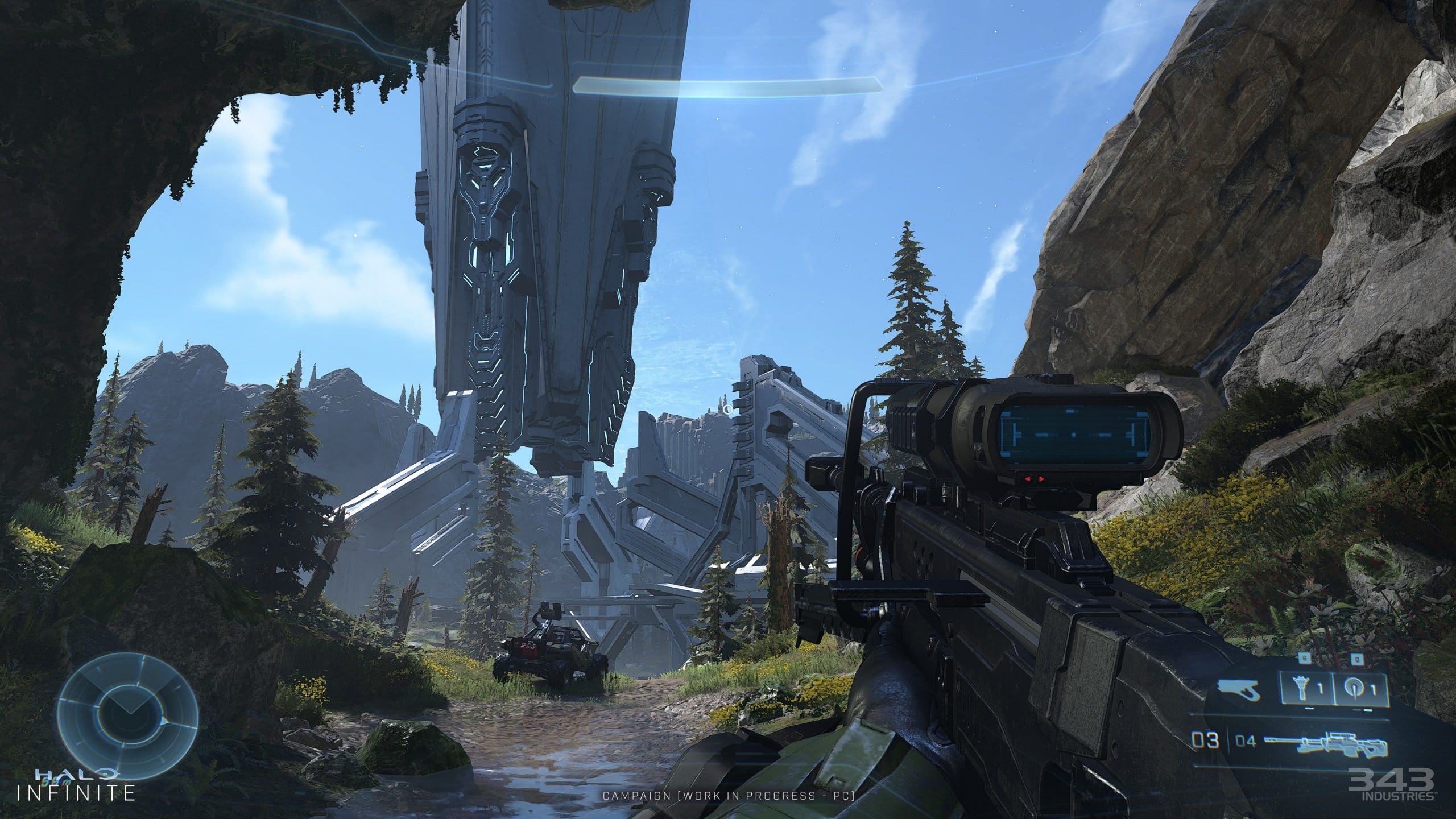
Zeta Halo is a very rough and rugged place, which could be compared to terrain like that of Montana, or Canada’s British Columbia. It’s country through and through, with lots of rocks, mountains and foreign installations included. A lot of my fun came from taking my own path through the environment, using Infinite‘s new grappling hook. This game changing addition became a crutch, and was my most used and most beloved in-game item. At least, outside of those that shot bullets and bullet-esque things.
The grappling hook is just one of several different tools and abilities that you’ll find as you play through the core campaign. It is, however, by far the best. The others — a drop shield, a quick boost, a general shield upgrade and a threat sensor — aren’t nearly as helpful, and I say that as someone who always goes for health upgrades first. I simply found that my shield depleted rather quickly regardless of how many times I’d upgraded it.
Simply put, Halo Infinite is not an easy game. It’s full of enemies, whose quality artificial intelligence can lead to some pretty intense firefights. Rarely did I ever feel like a badass, because foes’ weapons did quite a lot of damage quickly, forcing me to find cover quite often. The aforementioned grappling hook was a great aide during these times, because I could use it to quickly get away from combat. This didn’t always work, though, because there’d be times where I was too late, or occasions where they’d manage to shoot me as I was using the hook.
I will never be so pompous as to say that I’m one of the best gamers out there, because that’d be crass and untrue. However, I’ve been quite good at them over the 30 years I’ve been gaming, and have managed to complete a lot of titles on higher difficulties. While Halo has rarely been one of them, I did beat Reach on Legendary with some friends. I can’t even fathom wanting to play Infinite on that level, because normal was surprisingly tough. Hell, a fellow reviewer friend and peer, who’s a massive fan of this series, told me it was pretty challenging on easy. That’s saying a lot.
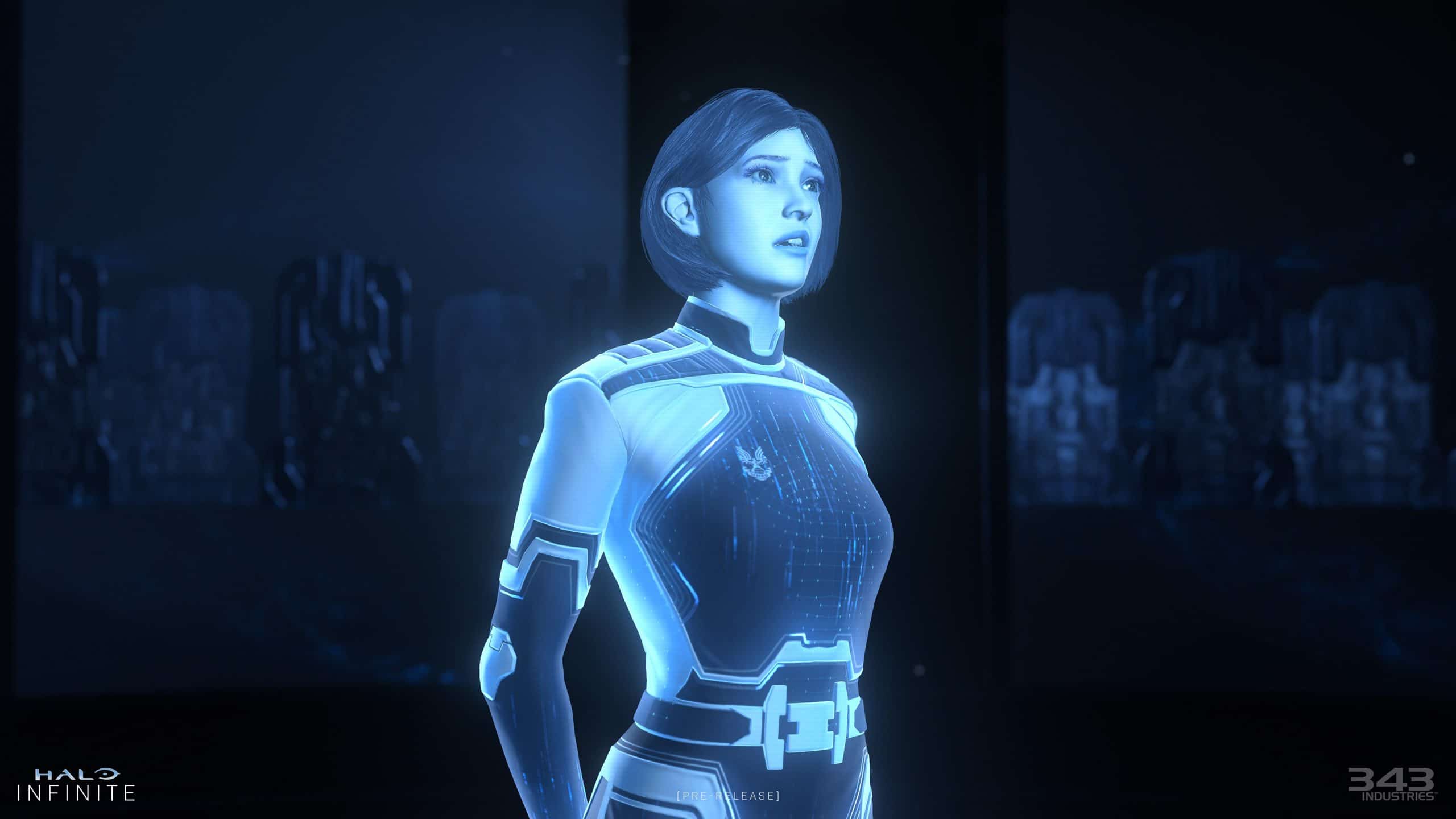
Granted, there are many occasions where this game throws a lot at you; so much so that it can feel like the enemies are going to be endless. It becomes quite difficult when Hunters are thrown into the mix, because they’re usually found in pairs, and turn so quickly that it can be rare to see their backs.
Before moving on, I should note that I encountered two notable glitches within this review build. The first caused a random crash to the dashboard during a mission near the end of the campaign. The other involved Hunters, and caused me to have to face off against two of them at least a few times. That frustration was caused by a computer terminal not loading in below the third and final AA gun I was tasked with destroying, and I didn’t discover this until after a lengthy and hard fought battle against those jerks and their friends. Dying and killing them again didn’t help, and I worried I’d have to restart the lengthy mission as a whole. However, I got lucky, because the computer terminal showed up after I quit to the main menu and reloaded my last save. It set me back a bit, but not nearly as much as restarting the long mission would’ve. There was lots of distance between those guns!
Checkpoints were also a source of occasional frustration throughout the campaign. Sometimes they would be downright generous, but this would usually occur when I wasn’t in need of them. At other points, it seemed like forever between them. I’d take a tank and go through two fields full of enemies, tanks and turrets, just to die and have to go back to when I picked the tank up. Then, I’d decide to try to take a different approach by getting out of the tank at a certain point and traversing through the woods, and a checkpoint would randomly trigger. 343 needs to look at and address this issue, because it’s never clear as to when a checkpoint will trigger, nor is it balanced well enough. I can see this becoming a source of frustration for others, as well.
Of course, being that Halo Infinite is open world and predominantly non-linear, more is asked of the checkpoint system. Still, here’s hoping that the studio can make them more fair, for the occasions where they currently are not.
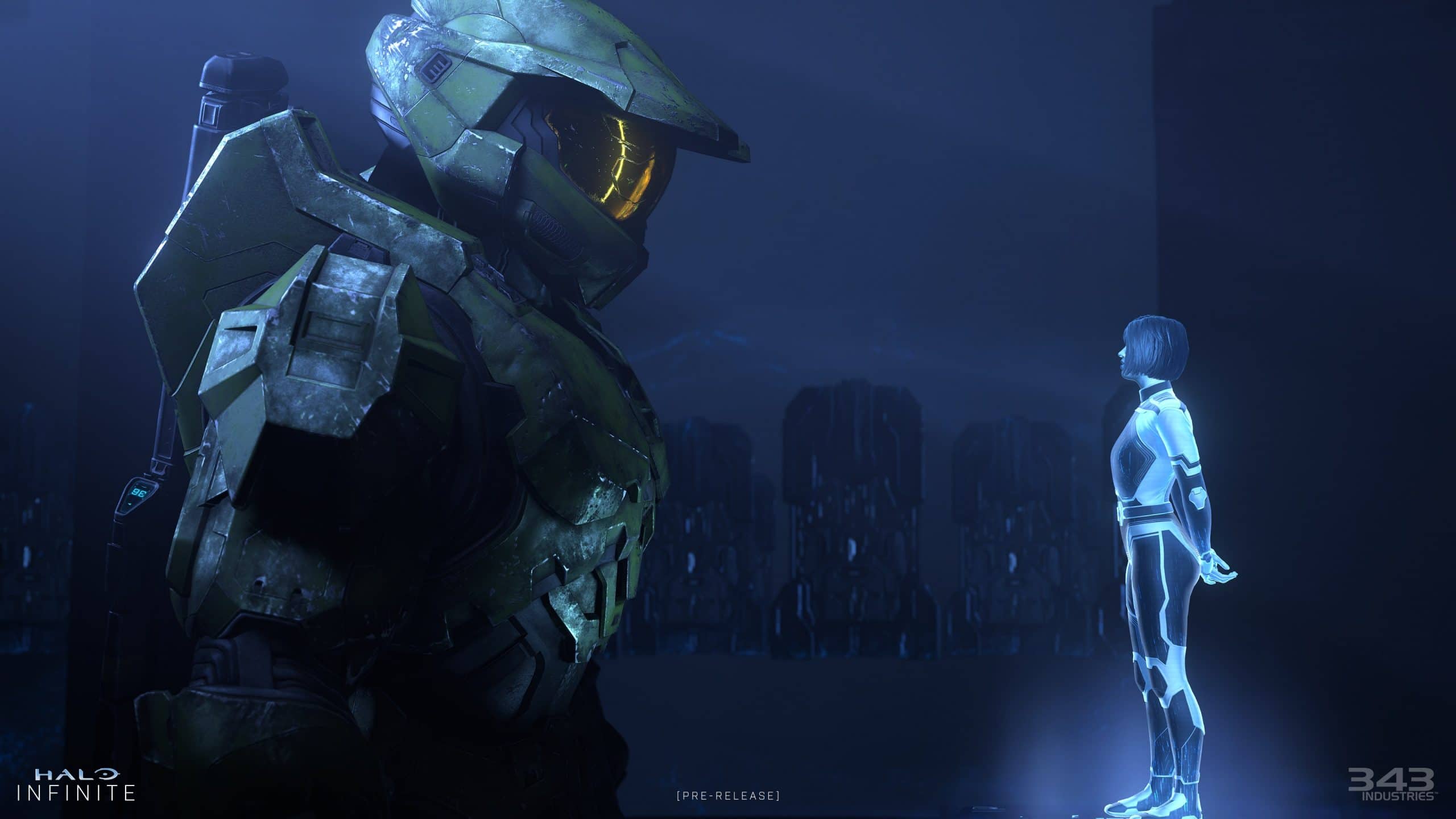
Speaking of the open world, it’s time to talk about the optional objectives and secondary content found within Halo Infinite.
When you’re not battling the Banished, dealing with a sarcastic new AI (named Weapon), and attempting to right past wrongs within the campaign, you’ll be exploring Zeta Halo itself. This will involve lots of walking, running, driving and usage of the grapple hook, and can lead to some nice bonuses. For one, there are quite a few resupply bases to take back from enemy hands, providing new fast travel, vehicle spawn and weapon selecting locations. Then, there are the major enemy encampments, which are often walled off and full of baddies. These will task you with completing different objectives, like destroying repair plants and blowing up silos.
Another optional quest involves taking out the different high value targets located throughout the map. These are like bosses in and of themselves, complete with lengthy health bars and their own unfriendly protection squads. I hope to kill all of these jerks, but only took out three or four during this playthrough. Once I can play the retail build, I’ll be more thorough, because my progress will matter, I’ll get unlocks and the things I find for use in multiplayer will actually carry over to the multiplayer mode. What I played for purposes of this piece was a review build that had to be downloaded separately, went by a funny code name and didn’t show on our site’s account when it was being played. As such, nothing carries over into the full game.
At first, I found myself being quite thorough, because that’s just how I am. However, I started to focus more and more on the campaign as I got further into the game, because of time constraints and knowledge of the above. That said, I still went out of my way for some secondary objectives, tried to find hidden items and did my best to find as many cores as reasonably possible. Those cores are what you use to upgrade Chief’s gear, such as his shield, his grappling hook (which can be used to electrocute and hit enemies with), his thrust ability and his threat sensor.
I didn’t care much about the gadgets that weren’t related to shield improvements or grappling, because they simply weren’t that helpful. To boot, it was a massive pain in the ass to switch between them; so much so that I stopped bothering. Having to press right on the d-pad, then press the direction corresponding to the correct tool wasn’t easy to do during such a heavily action-oriented game, nor was it user friendly. I’d also forget which direction was for which tool, mostly from not using the menu much, but also because it was so damned hard to see the icons due to their small size. Plus, I’d change to something, then go to use the grappling hook forgetting it wasn’t equipped. Then I’d get frustrated, and perhaps even die.
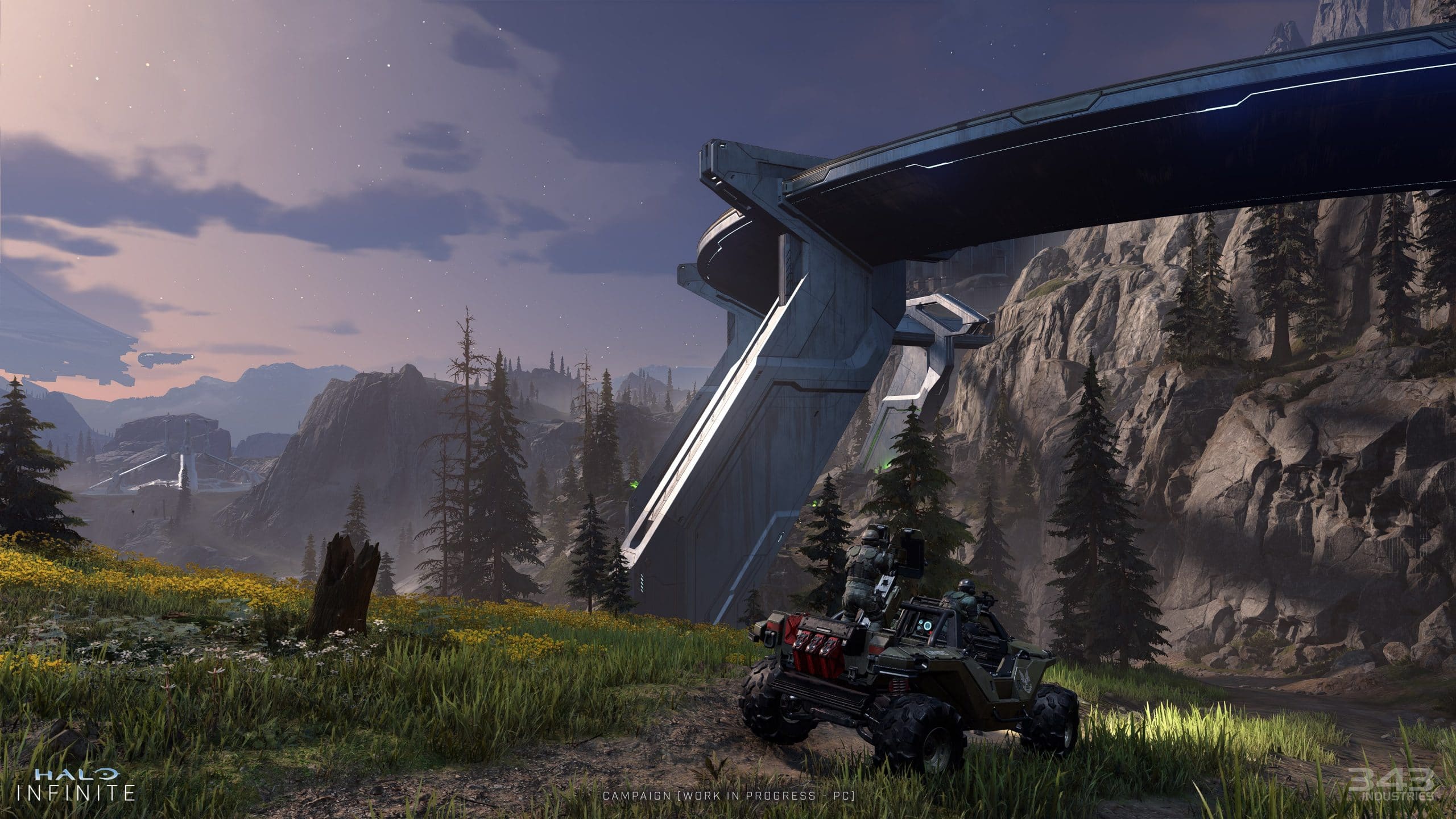
There are, of course, also collectibles to be found, including voice logs from both the UNSC and Banished sides, multiplayer cosmetics, skulls and more. With a map so large, it’ll take you quite a while to find everything, but things should come as you eliminate enemy squads and holdings one by one. Along the way you’ll even find UNSC soldiers in need of rescuing from intense firefights and general captivity. Once freed, they will even become brief allies.
In the end, my save file said that I’d played for about nine and a half hours. That surprised me, because I’m sure I spent more time beating the game. This didn’t feel like a short campaign, nor was it an easy one, and I spent a decent amount of time exploring its world too. Sure, some of the missions at the beginning and end of the game were linear, but most weren’t. I had to traverse quite a bit of landscape to complete them, including using a flying vehicle to travel large distances between objectives.
The shooting has never felt better, either. Halo Infinite offers a wealth of different weapons, some of which are returning favourites while others are newfound types like energy guns. All of them have their own pros and cons, too, adding strategy into the mix since you can only carry two and ammunition is surprisingly limited. Certain weapons are also better for certain foes, like the energy beam that is great at taking out flying robots, or the newly introduced gargoyles.
Overall, this is also a big improvement over the campaign of Halo 5: Guardians, which I didn’t enjoy all that much. Its new enemy type was really disappointing, not to mention annoying to fight, and its storyline didn’t do a lot for me. This follow-up isn’t perfect, and can sometimes get both frustrating and repetitive, but it’s a notable step forward and quite fun overall.
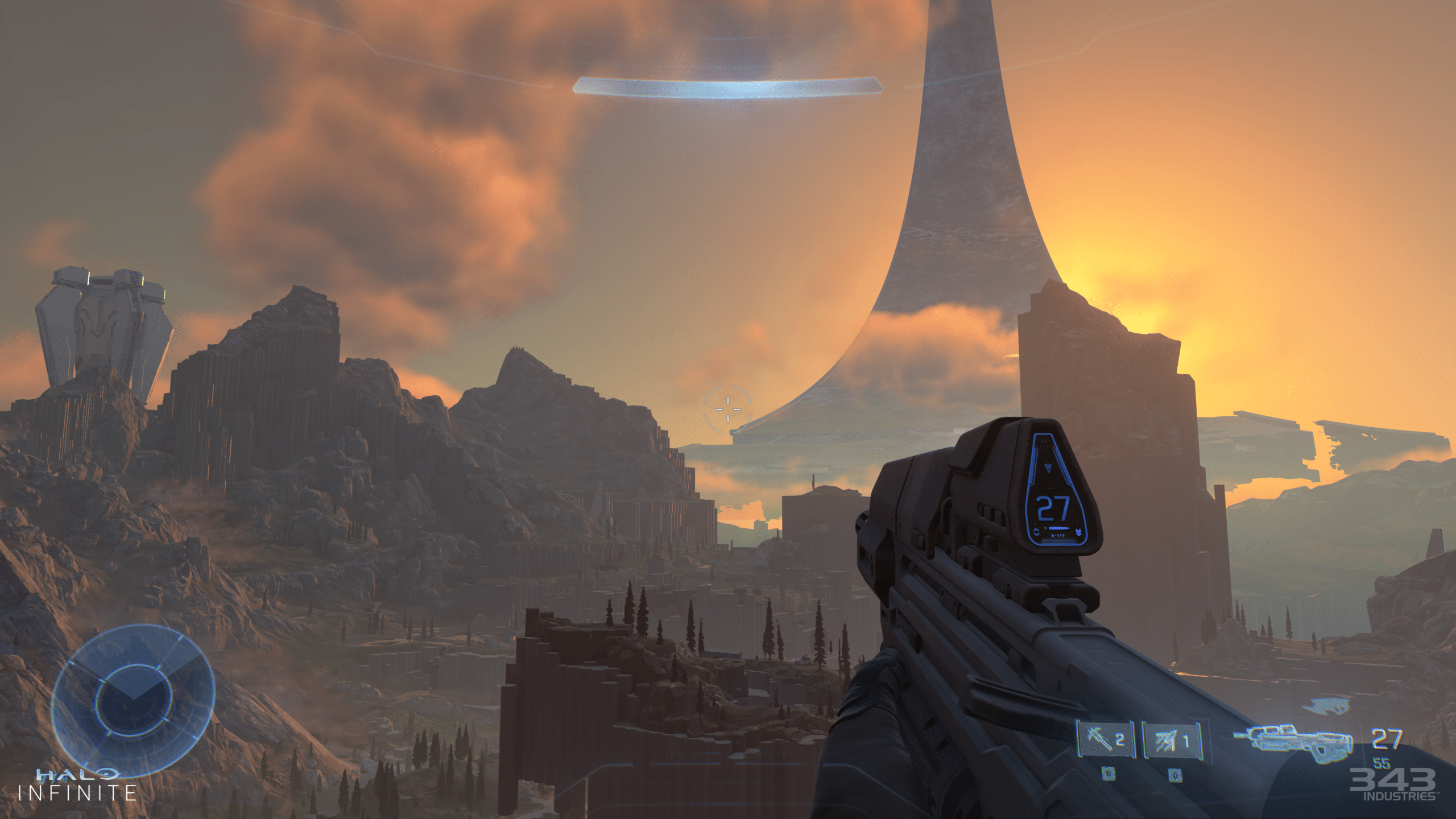
Although I played through this thing on an Xbox Series S review unit, it didn’t feel like I was missing out on much. The game looked stunning, it performed really well, and I hardly had any issues. I’m sure it looks even better on an Xbox Series X, and look forward to experiencing it on that console one day. However, I want to assure anyone with interest that Halo Infinite is an impressive beast on the digital only S. It’s thankfully not that large of a download, either, assuming that the multiplayer beta and the review build add up to roughly what the full retail game will be in terms of size.
Now, let’s move on to the multiplayer, which is the only thing some people will play, for whatever reason. I can’t imagine avoiding and not playing a good campaign, but to each their own. Then again, I’ve always been more of a single player person myself, and grew up playing many of this genre’s classics that way.
It is very possible that you’ve already played a ton of Halo Infinite‘s multiplayer beta, and it’s also very possible that you’ve even played more than me. That’s because, unlike the single player campaign — which will add co-op at a later date — the online festivities launched during Microsoft’s Xbox 20th anniversary celebrations. As such, folks have already had a few weeks to battle it out online, with what was said to be the same amount of content the launch day version will feature.
Since that surprising release, I’ve spent hours playing Halo Infinite‘s multiplayer over at least several different days. I’ve only played a bit since the campaign was made available to me, though, because I’ve been under the weather and had to focus my energy on finishing the campaign for this review.
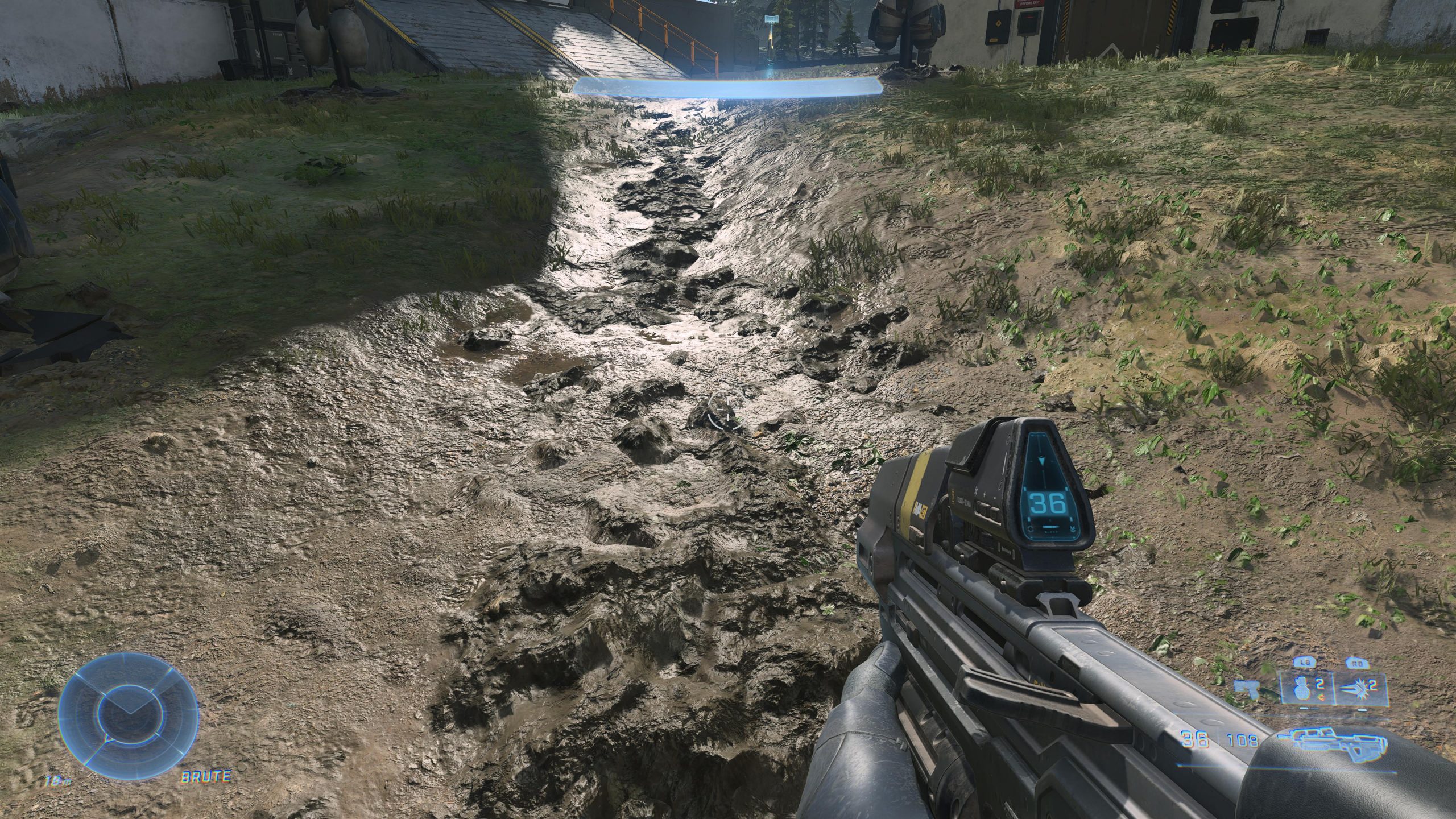
First things first, it’s important to mention that the online portion of this game is free-to-play. As such, you won’t even need an Xbox Game Pass or Xbox Game Pass Ultimate subscription to play against others on Xbox One, Xbox Series or Steam. This is a big deal, because it opens the game up to an even wider audience; some of whom wouldn’t have purchased or played it otherwise. The downside to this, though, is that Halo Infinite is now a bit of a freemium game. Not in the sense that you have to pay to win, because that would be a disaster and a joke, but due to the fact that a lot of the game’s cosmetics are hidden behind a real world paywall.
As you’ve perhaps already seen or read, even basic cosmetics like the colour red currently cost money. This is also true of other, more special, armor sets. In all honesty, I don’t see this as being a big deal, because it allows the multiplayer to be free-to-play, and none of the stuff that costs money is anywhere close to being forced or necessary. If people want to waste money on special armor sets, unique colours or whatever other customizing features, they can do so. I won’t be spending anything, though. At no time in my thirty years of gaming have I ever spent a cent on a microtransaction or loot box, no matter how appealing any of the included content was. Sure, I used to buy DLC for my favourite games, but costumes and things like that were never even considered.
What I’m saying is that it’s very easy to enjoy Halo Infinite without spending any money outside of a Game Pass subscription, and that’s just needed for the campaign. Everything you’ll need to play and have fun is available in the base package, and all skins do is make you look cool or stand out a bit more; neither of which is important. That said, I’m not a fan of microtransactions whatsoever, and will never support them.
With all that having been covered, let’s move on.
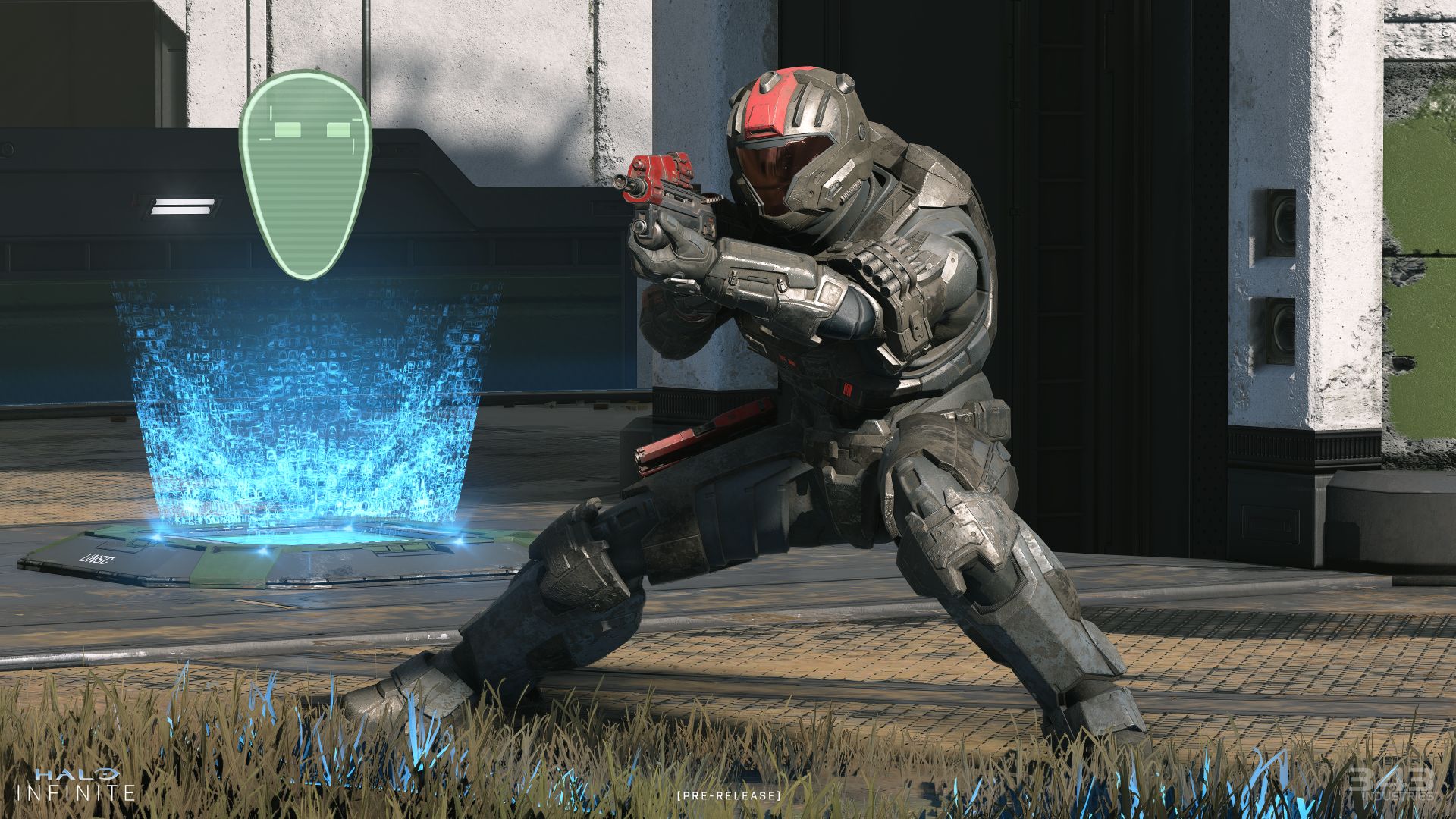
From the start, I’ve enjoyed my time with this particular multiplayer suite, although it’s certainly not the most feature rich in series history. Playing against others has been a blast, and I’ve had some truly great games, on top of others I’d rather not talk about. I do, however, wish that it was possible to search for specific modes, because while I enjoy playing oddball, capture-the-flag and point capture, I’d generally rather just play slayer. I’m an older gamer, who grew up with Atari, NES, SNES and then the deathmatches of Goldeneye 007, Perfect Dark, Duke Nukem 64 and eventually Call of Duty 2. Free-for-all and team deathmatches (or slayer, in this case) will always be my favourite modes, and my fondest Halo memories came from playing free-for-all in Halo 3 after buying it at the midnight launch. Oddly enough, though, that was the one campaign I stopped playing. I just couldn’t get into it.
ODST is my favourite, if you’re wondering.
Unfortunately, it’s not currently possible to search for just one specific game type, though it is possible to choose between the large scale modes and maps and the smaller ones. I’m a much bigger fan of the more contained Halo gameplay, and almost always stuck with it. I also grew to enjoy oddball and control more than ever before, especially once I was able to kill three enemies with the oddball in one game. That was a proud gaming moment.
I was also disappointed to discover that free-for-all slayer is not included. Thankfully, 343 recently issued a statement saying that it is coming soon.
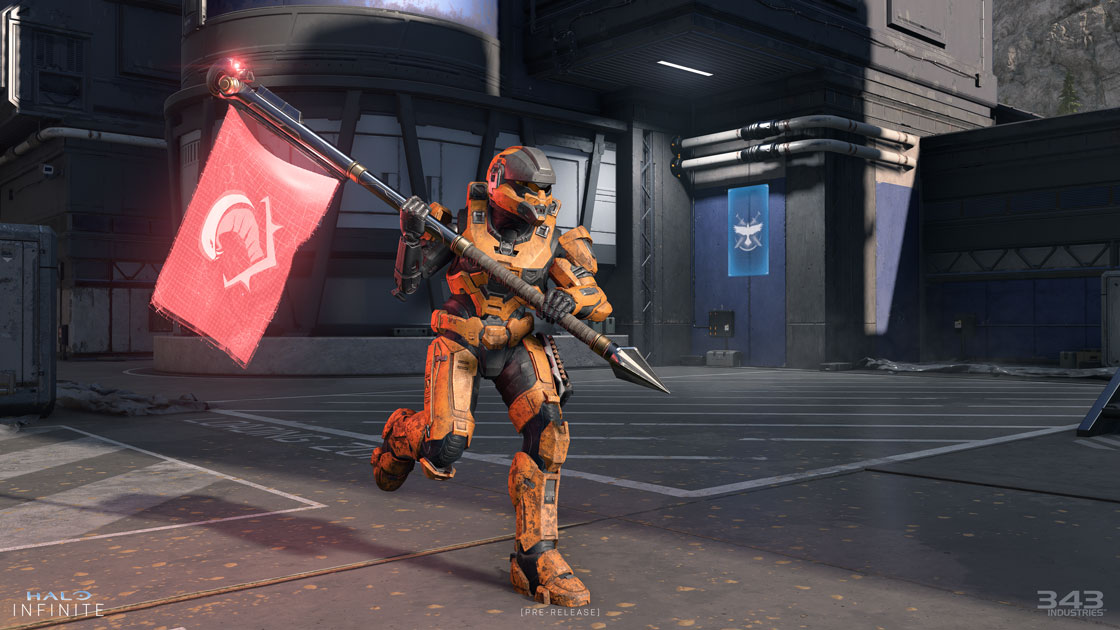
The core gameplay found within this suite is fun, challenging, addictive and well made. The maps are really impressive, the action is skill based and mostly fair, and it’s easy to lose oneself in. Although I don’t play a lot of multiplayer anymore, I can see myself continually going back to play more of this. To me, it’s more enjoyable than Call of Duty, at least these days.
Simply put, if you like Halo and skill-based shooters, you’ll like this. It’s a blast, and the addition of tools like the grappling hook make it even better. Things are sure to improve even more once new content is released.
That said, lots of people have been complaining about Infinite‘s battle pass for most of the last few weeks. It may offer 100 experience levels, but it was taking people a long time to progress, which is something I noticed during my time with the beta. 343 also listened to this loud criticism, though, and has changed things so that both experience and levels are earned faster. As such, it’s now a lot more fair, and it feels like you’re actually playing towards something.
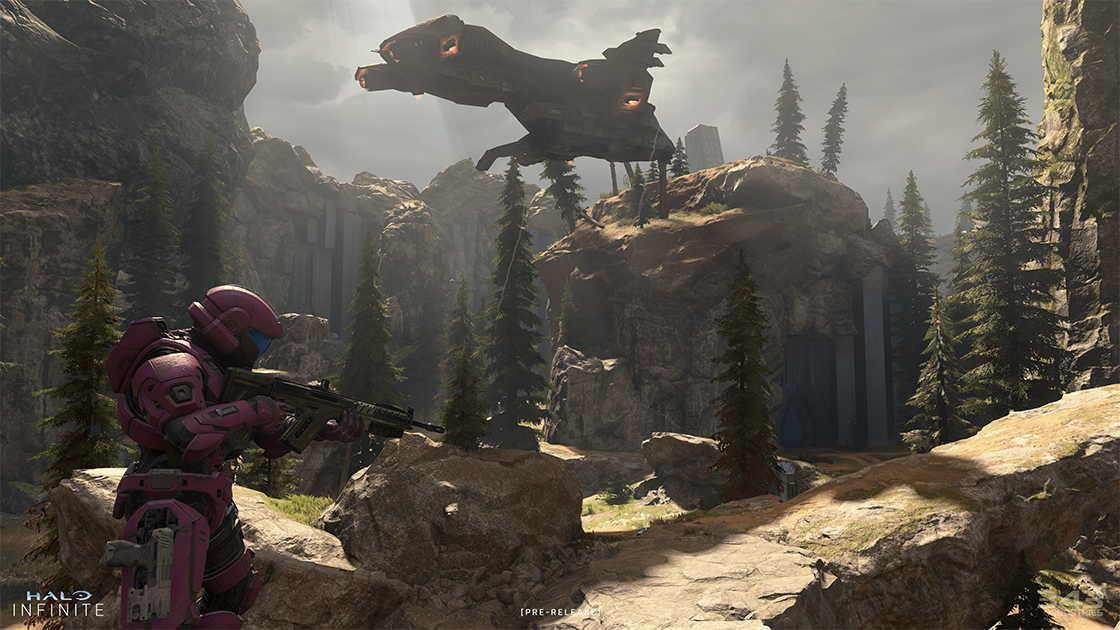
For the most part, my time with this multiplayer suite was a blast. Even when I ended up near the bottom of my team, I still had fun, because I don’t take this stuff too seriously and understand that there are many better players out there. I don’t play multiplayer nearly enough to even consider being better than them, nor is my constantly tired state great for gaming success. I find that I’m not as good at games as I used to be, because of my sleeping issues, but I still play and have fun.
I don’t know if it’s because of the sheer amount of people playing, or if it’s a server issue, or both, but there was one problem that I noticed. It involved stuttering, which reminded me of lag even though it probably wasn’t. I recently upgraded my Internet, and had a pretty seamless experience outside of occasional bits of stutter.
What am I talking about? Well, my Spartan would sometimes glitch the wrong way for a second, or I’d see an enemy move in an unnatural way.
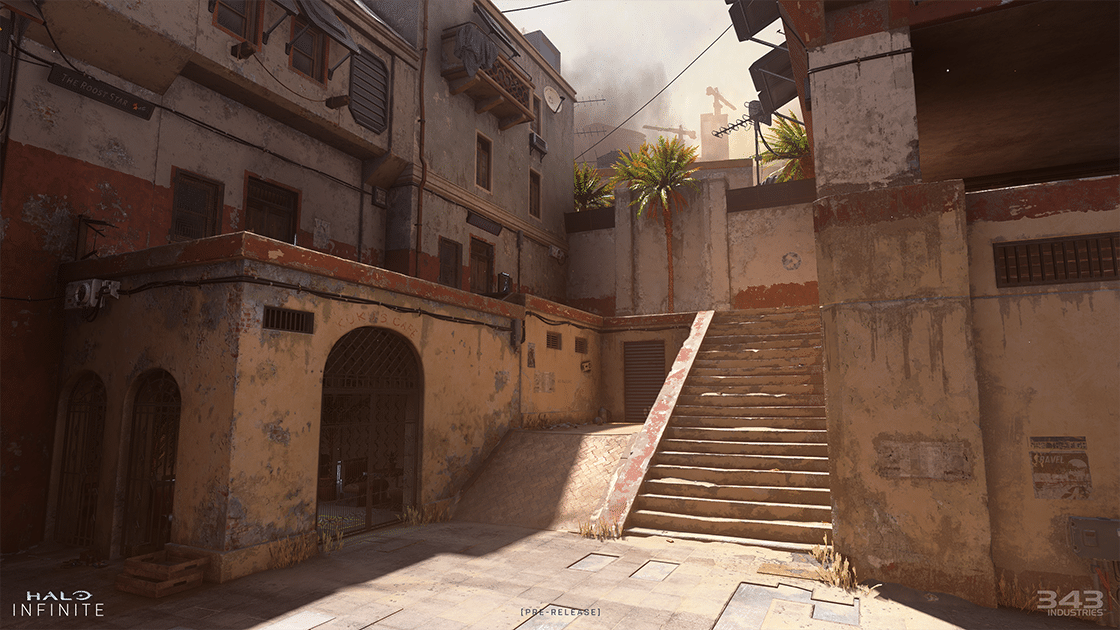
Here’s hoping this stutter will soon be fixed, and that it will have been addressed by the time Halo Infinite is fully released on December 8th. It hurts an otherwise very good experience, but not in a game breaking way, because it’s not that common.
Another thing that stood out to me with regards to this game was how nice it looked. With Call of Duty, you normally see a massive visual downgrade between the campaign and the multiplayer. Halo has always managed to be better at avoiding this, and Infinite is a continuation of that. It looks really good in single player, and is also impressive looking online. There’s tons of colour, detail, and impressive lighting to be seen. On top of that, the game sounds incredible, thanks to great sound effects, amazing music and very good voice acting.
At times, I marveled at the amount of detail (damage included) found in Master Chief’s armor. At others, I took a moment to look around the impressive game world. The same occurred online sometimes, because it was all very impressive. The detail, the lighting, the textures, etc.
We’ve waited quite a while for Halo Infinite, but this game was worth it in the end.
This review is based on the Xbox Series S version of the game, which we were provided. The campaign was played through a review build, and the multiplayer was played during the live beta.

